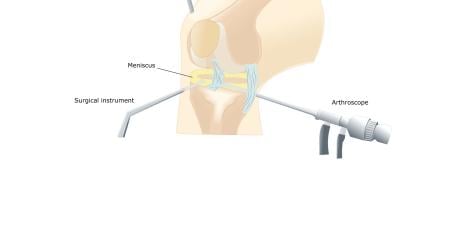Case
Dr. Johnson has been medical director at Saint Theresa Hospital for 6 years and has a reputation for his strong work ethic, highly satisfied patients, interpersonal skills, and decision-making ability. He is often called for guidance in very difficult cases. During his tenure, Saint Theresa Hospital has seen a large increase in patient visits, though the medical staff has not grown accordingly. Treatment costs, manpower, equipment, and other medical expenses have escalated greatly, while the hospital’s income has remained fairly consistent. One of the most understaffed departments is neonatology. Last year, the department treated 20 patients with the help of other staff members. Only one of those patients survived past 1 month.
The attending neonatologist at the NICU, Dr. Smith, had just seen a 1-pound baby girl born at 26 weeks’ gestation with semilobar holoprosencephaly, tetralogy of Fallot, and esophageal atresia. The baby’s APGAR score was 2 at 1 minute and 5 minutes. Dr. Smith approached Dr. Johnson and explained, “We have a neonate who will require several major surgeries to have any chance of survival, and even then the level of function she might attain is uncertain due to her neural malformation. She may or may not ever be able to survive outside of the hospital. The parents are understandably frantic and want everything done to keep the baby alive, but I think it’s futile—the last few preemies we saw with similar malformations all died within a month. We simply do not have enough staff on hand to treat the patient and would have to pull from other units. What do you suggest we do?”
Commentary
As soon as questions of will or decision or reason or choice of action arise, human science is at a loss.
A.N. Chomsky[1]
Physicians, in their capacity to provide or deny lifesaving treatment , can inadvertently become the gatekeepers of medical care. With the spiraling cost of our health care system, doctors are more likely than ever to be asked to consider some form of health care “rationing” in their medical decision making.
Rationing can be defined as “the withholding of a medically beneficial service because of that service’s cost to someone other than the patient” [2]. According to Ubel and Goold, in order to meet the criteria for bedside rationing,
the physician must (1) withhold, withdraw, or fail to recommend a service that, in the physician’s best clinical judgment, is in the patient’s best medical interests; (2) act primarily to promote the financial interests of someone other than the patient (including an organization, society at large, and the physician himself or herself); and (3) have control over the use of the medically beneficial service [2].
Does our case fulfill the criteria for rationing? Yes, if Drs. Smith’s and Johnson’s reasons for withholding medical care are not primarily based on the infants best interest [2]. Let’s analyze their predicament.
A preterm infant born at 26 weeks’ gestation has, on average, an 84 percent chance of survival and a 34 percent chance of survival without morbidity [3]. However, the numbers look bleak when this specific infant’s additional existing congenital anomalies are taken into consideration. Dr. Smith says that none of the infants treated at this particular hospital with similar congenital malformations survived. In order to have any chance of long-term survival the infant will require multiple major surgeries during a prolonged hospital stay. In the (unlikely) case of survival, major long-term morbidities and poor quality of life for the child and the family seem certain. In this setting, many would consider medical care futile. Finally, like many hospitals in the country, Saint Theresa Hospital is facing financial limitations, and managers and doctors have to decide how to allocate resources most effectively. Given these clinical and economic realities, should the parents’ choice of “doing everything” to save the baby’s life be honored? Which course of action is more justifiable ethically—aggressive medical treatment or comfort care? Assuming provision of medical care is not considered futile by the medical team, the significance of resource allocation becomes an important factor in determining the course of action in this case.
To help clarify this complex situation, we will consider it through the lens of the four principles of medical ethics popularized by Tom Beauchamp and James Childress: beneficence, nonmaleficence, respect for autonomy, and justice.
Beneficence means putting the patient’s welfare at the heart of all decisions. It may be difficult to define which outcome is in the patient’s best interest. Many argue that saving a person’s life should always supersede concerns about prolonged suffering, pain, and long-term morbidity. Others consider “quality” to be more important than “quantity” of life. In the latter view, providing comfort care until the eventual death would be consistent with the principle of beneficence.
Nonmaleficence is doing no harm. Generally, the harms of such treatments as surgical procedures are accepted because they prevent a greater harm—death or increased disability. In the case at hand, the harm would be inflicted in the attempt to secure uncertain survival. According to this principle and considering the grim prognosis, it may not be justifiable to put the infant through the traumatic intensive care.
The principle of respect for autonomy recognizes the right of an individual to self-determination. In the case of unemancipated minors this right is generally exercised by the parents, who are considered most able to act in their child’s best interest. There may be a conflict between the recommendations of clinicians and the choices parents make. If the parents’ preferences fall within the range of standard medical care, they have to be respected; otherwise relevant laws protect children from endangerment and physicians from liability. If the parents in our case continue to request full medical treatment and the infant is not resuscitated, their parental autonomy is violated.
Justice refers to fairness in access to care. At the core of rationing decisions lies a specific type of justice called distributive justice. Distributive justice involves equitable and appropriate distribution of limited resources [4]. It is important to recognize that the interpretation of distributive justice depends on the context [5]. In the libertarian framework, individuals are fully responsible for their own health. Each individual has the right to decide when and for what to seek treatment. In the communitarian concept, the criteria for justice is based on what the society considers is necessary health care. In the utilitarian concept, justice means improving the health of the society as a whole. The motive behind this concept is largely economic—available financial resources should be used in a way that achieves the greatest possible health gain for the whole population. Thus, in this concept, it is justifiable to withhold expensive and relatively ineffective treatments for rare conditions. Finally, the egalitarian principle of distributive justice holds that those with like needs get like care [5]. Because the U.S. health care system is both publicly and privately funded, it reflects many if not all of the views of justice explained here. Hence arguments can be and are made for both granting and withholding intensive care for our infant.
Armstrong and Whitlock describe six criteria that could be “weighed in the balance” to resolve allocation dilemmas like this one [6]. Specifically, the criteria that may be applied to our case are need and equality.
- Need: Does the baby have a need for medical intervention? It is clear that the infant will die without intensive care. Other than elective procedures, most interventions in medicine are needed, although the degree of need may be perceived differently by the patient and the medical staff. Therefore, allocation of resources based on the “need criterion” alone is not practical or financially sustainable.
- Equality: Equal distribution of health care resources is not a useful concept by itself. Under this standard, it would not be justified to spend excessive resources for intensive care for our infant while healthy persons use only minimal resources (say for preventive visits). Traditionally, the insurance model is based upon pooling of funds to allow distribution of resources from those using less to those needing more. Most people will agree that withholding intensive care to further equality, per se, is not consistent with our social norms.
- Contribution: Contribution to the society cannot be used as the sole criterion for allocating of resources. In the case of newborns, it is impossible to project future contributions to society and it would clearly be unfair to deny care for that reason.
- Ability to pay: To deny health care services because of one’s inability to pay goes against the fundamental belief that every individual has the right to receive emergency medical care regardless of citizenship, legal status, or ability to pay, as specifically outlined in the Emergency Treatment And Labor Act (EMTALA) of 1986.
- Effort: A person’s effort to improve his or her own health has been used as a criterion for allocating resources. It is reasonable to make allocation decisions about limited resources based on the patient’s effort to support the care they receive. This criterion has been used for organ allocation—patients who are not compliant with their pretransplant care regimens may not be transplant candidates for that reason—but in the case of children or mentally handicapped patients, or in a clinical situation like this one that is not dependent on patient effort, this criterion is obviously not applicable.
- Merit: Allocation of resources can be judged on the potential that the investment will benefit the patient. Clinical research and experience are used to determine whether a particular intervention’s likelihood of success warrants the treatment. The use of exceedingly costly medical therapies may not be questioned when there is a reasonable chance of cure; it is more likely to be questioned when there is a low likelihood of improving the life expectancy of a terminally ill patient. In our case the potential benefit would be a life saved, but the chance of success is very low. If she lives, the baby is likely to be severely disabled and need chronic care. Societal and parental values regarding what constitutes a reasonable quality of life modulate the standard of “potential benefit.” The reason the physicians in the case are discussing not offering care is that the chance of success (life with reasonable quality) is exceedingly low.
The American Medical Association (AMA) Code of Medical Ethics provides guidance on resource allocation. According to the code, nonmedical criteria such as ability to pay, age, social worth, perceived obstacles to treatment, the patient’s effort to improve his or her health, or past use of resources should not be considered while allocating limited resources [7].
Keeping the aforementioned ethical concepts in mind, doctors and hospital managers need to have a process in place for making resource allocation decisions preferably as soon as limitations of resources are recognized. The process should be fair, inclusive, and transparent [8]. A process that fulfills these criteria will provide procedural justice, according to the belief that “if the process is fair, the outcome will likely be fair as well” [9]. An example could be a meeting of hospital managers, doctors, and nurses to understand and navigate through the diversity of positions, possibly with the input of an ethics committee or consultant.
Given that rationing decisions are made within the constraints of the institution’s financial viability, is the team obligated to invite parents to these meetings? According to the AMA, “patients denied access to resources have the right to be informed of the reasoning behind the decision” [7]. Hospital staff may choose to follow through with the decision making first and involve parents after a consensus has been reached. As in other situations when the medical team is choosing to limit therapies, a parent’s wish to contact other institutions, if available, should be facilitated.
Case Analysis
At the organizational level, when various goods are in competition, the first priority should be the patient’s quality of care, followed by professional excellence, and finally the organization’s financial stability [8].
The case presented here reveals rationing at the institutional level. By not adequately staffing the neonatal unit, the hospital administration is withholding optimal care from newborn infants. It is likely that the poor outcomes in the neonatal unit are related to this chronic understaffing. In the vignette described here, the grim prognosis means that instituting intensive care may very well be considered futile and not in the infant’s best interest and should therefore not be instituted. Nevertheless, physicians should ensure that the principles of distributive justice are not violated—care should be continued or discontinued on the basis of medical benefit, not financial concerns. Parents should be involved in the decision-making process and their views respected.
Frequently, parents realize the futility of care with appropriate counseling and support. The hospital administration should use this opportunity to create a system in which rationing decisions are made in consultation with all stakeholders (including patient representatives) in a transparent way.
In summary, rationing of care is increasingly becoming a reality, but it need not compromise ethics. Using sound principles, physicians will be able do justice to their patients, profession, organization, and society.
References
-
Knowles E. The Oxford Dictionary of Quotations. 5th ed. Oxford: Oxford University Press; 1999: 212.
- Ubel PA, Goold S. Recognizing bedside rationing: clear cases and tough calls. Ann Intern Med. 1997;126(1):74-80.
- Stoll BJ, Hansen NI, Bell EF, et al. Neonatal outcomes of extremely preterm infants from the NICHD Neonatal Research Network. Pediatrics. 2010;126(3):443-456.
-
Maddox PJ. Administrative ethics and the allocation of scarce resources. Online J Issues Nurs. 1998;3(3). http://nursingworld.org/MainMenuCategories/ANAMarketplace/ANAPeriodicals/OJIN/TableofContents/Vol31998/No3Dec1998/ScarceResources.html. Accessed October 12, 2012.
- Leget C, Hoedemaekers R. Teaching medical students about fair distribution of healthcare resources. J Med Ethics. 2007;33(12):737-741.
- Armstrong CR, Whitlock R. Resource allocation. The cost of care: two troublesome cases in health care ethics. Physician Exec. 1998;24(6):32-35.
-
American Medical Association. Opinion 2.03 - Allocation of Limited Medical Resources. Code of Medical Ethics. http://www.ama-assn.org/ama/pub/physician-resources/medical-ethics/code-medical-ethics/opinion203.page. Accessed October 12, 2012.
-
Gardent PB, Reeves SA. Ethics conflicts in rural communities: allocation of scarce resources. In: Nelson WA, ed. Handbook for Rural Health Care Ethics: A Practical Guide for Professionals. Lebanon, NH: University Press of New England; 2009. http://geiselmed.dartmouth.edu/cfm/resources/ethics/chapter-00.pdf. Accessed on October 12, 2012.
- Nelson WA. An organizational ethics decision-making process. Healthc Exec. 2005;20(4):8-14.



